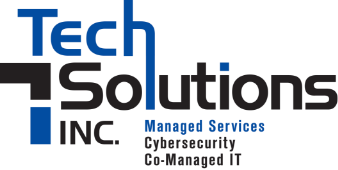In today’s evolving threat landscape, cybersecurity isn’t just an IT concern, it’s now a prerequisite for doing business. More importantly, cyber insurance providers are raising the bar for their cybersecurity standards for coverage, with many now requiring Security Information and Event Management (SIEM) systems and Security Operations Center (SOC) capabilities as part of their underwriting process.
If your organization is relying solely on traditional antivirus and firewall tools, it may no longer meet the baseline for coverage – or worse, for claim approval.
Understanding SIEM and SOC: What’s the Difference?
SIEM tools act as a centralized hub for collecting, correlating, and analyzing logs from across your network, servers, endpoints, firewalls, and more. They help detect unusual activity, like a user logging in at 2 a.m. from an unexpected location, and alert your team before damage is done.
A SOC, whether in-house or outsourced, is the team (or service) responsible for monitoring these alerts, investigating threats, and responding in real time 24/7/365.
Together, SIEM and SOC form the nerve center of a proactive security posture.
Why Cyber Insurers Are Now Requiring SIEM/SOC
Cyber insurers have seen a dramatic spike in claims due to ransomware, business email compromise, and insider threats. In response, underwriters are tightening eligibility by requiring systems and protections such as:
- Real-time threat monitoring capabilities
- Centralized log management and extended retention (often 12+ months)
- Proactive incident detection and response workflows
- Proof of compliance with security frameworks like NIST, HIPAA, or CIS
- Evidence of risk mitigation during breach investigations or claims reviews
If you cannot show that your organization actively monitors, detects, and responds to threats, insurers may deny coverage, limit payouts, or increase premiums.
Dispelling Common Myths
Many organizations, especially SMBs, believe they’re too small to be targeted or that their current stack is “good enough.” Unfortunately, these assumptions are outdated:
- “We have logs.” → But are they being analyzed in real time?
- “We have antivirus.” → But what happens if it fails to detect a zero-day threat?
- “We’ve never had an incident.” → Breaches are often discovered months after the fact, and no one is 100% able to avoid a breach.
Affordable, Scalable Solutions Are Within Reach
You don’t need a massive IT department to meet these requirements. Many IT providers like TechSolutions now offer managed SIEM and SOC services tailored to SMBs, giving you:
- 24/7 monitoring and alerting
- Expert threat response
- Compliance-ready reporting
- Integration with your existing systems
- Peace of mind when renewing or applying for cyber insurance.
Ready to See Where You Stand?
If you are concerned about potential gaps in your current environment, reach out to the TechSolutions team. We can help you identify and understand what your policy may soon require and offer the necessary systems to meet these requirements with ease.
Let’s ensure your cybersecurity posture protects both your business—and your bottom line.

